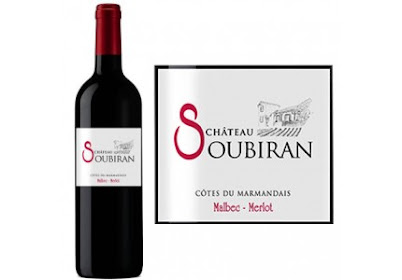from
Behind the French Menu
by
Bryan G. Newman
behindthefrenchmenu@gmail.com
Perfectly cooked red mullet.
2018 Paris Guy Savoy, Rouget Barbet.
www.flickr.com/photos/136366317@N06/38502256460/
Juste Cuit, Juste Raidies, and Juste Saisies will be on many menu listings for perfectly prepared vegetable, fish, and shellfish dishes. By using just two words, the chef advises diners how certain dishes will be cooked.
Juste Cuit
Perfectly cooked vegetables, fish, or shellfish. Overcooked vegetables lose their texture, and overcooked fish become mushy. A listing "juste cuit" will be served the minute it is ready.
Juste Cuit on French menus:
Asperges Blanches Juste Cuit au Sauce Hollandaise – Perfectly cooked white asparagus, served with Hollandaise sauce. Asparagus should never be overcooked, a slight crunch should remain.
Perfectly cooked green asparagus
www.flickr.com/photos/hans-westbeek/5616253061/
Dos de Bar Juste Cuit au Four, ses Poivrons Marinés et son Petit Jus Acidulé – A thick cut from the back of a European Sea Bass baked in the oven until perfectly cooked and then served with marinated bell peppers and a slightly acidic sauce. (For fish a sauce acidulé will be lemon based).
Médaillon de Lotte Juste Cuit au Beurre, Légumes du Potager – A medallion, a round or oval cut, from the tail of a monkfish perfectly cooked in butter and served with market garden vegetables.
Juste Raidies
Perfectly cooked fish and shellfish. The word raidie on its own means stiffened. Juste raidies for shrimps and lobsters indicate that the shell will have just changed color and the meat just firmed up. Overcooking can turn shellfish into flexible plastic. For oysters which are often served raw overcooking destroys the texture, juste raidies is what the diner wants for cooked oysters and clams.
Juste Raidies on French menus:
Huîtres Spéciales de Claire Juste Raidies au Céleri et Pomme Akane de Pays – Speciales de Claire oysters perfectly cooked and served with celery and the pulp of locally grown, Japanese Akane eating apples. Speciales de Claire oysters are very privileged oysters. After reaching two to three years of age they are taken to a river estuary or saltwater marsh with no more than ten other oysters per square meter to fatten and absorb flavor for at least two months.
Langoustines Juste Raidies, Écrasé de Potimarron, Artichauts en Barigoule en Vinaigrette aux Agrumes – Dublin Bay prawns perfectly cooked and accompanied by mashed pumpkin and artichauts en barigoule. Artichauts en barigoule are baby artichokes stuffed with mushrooms that will have been lightly braised; here, they are served with a citrus fruit accented vinaigrette. Baby artichokes have no choke so they may be eaten completely. (Caveat emptor: Langoustines are the Dublin Bay Prawn, the real scampi, while langoustes are rock lobsters, the owners of lobster tails).
Dublin Bay prawns from Quiberon, in Brittany, perfectly cooked
with calamari, mussels and cockles.
Rouget Barbet Juste Raidi au Pistil de Safran Crème de Piment Doux et Ail Noir – Perfectly cooked red mullet flavored with saffron threads and served with a sauce made with sweet peppers and black garlic.
Juste Saisies
Perfectly seared. The cooking term for fish and seafood that are just lightly seared; hardly cooked at all.
Juste Saisies on French menus:
Les Saint Jacques Juste Saisie Émulsion de Cresson - Perfectly seared king scallop meat served with a thick watercress sauce. Even the slightest overcooking can destroy the delicate texture and flavor of scallops. Scallops that are part of another dish that is well cooked may contribute a little texture, but very little taste. (Coquille Saint Jaques indicates a scallop served with its shell, while Saint Jacques alone indicates scallop meat without the shell).
Perfectly seared king scallops
www.flickr.com/photos/ralphandjenny/6766466185/
Gambas Juste Saisies au Sautoir, Tuile de Vieux Parmesan – Large shrimps perfectly seared in a sautoir, a high-walled frying pan, served with very thin slices of aged Parmesan cheese. An old Parmesan cheese is a Parmigiano Reggiano Vecchio and will have been matured for eighteen months to two years. (Indicating the particular cooking utensil used is part of French kitchen tradition. The chef is sharing his or her technique).
Truite Juste Saisie, Pommes de Terre Ratte Caramélisées à l'Huile d'Olive – Perfectly seared trout served with ratte potatoes, caramelized with olive oil. Ratte potatoes, sometimes called fingerling potatoes or asparge potatoes, are among the most popular potatoes in France. (The word ratte in French does mean a rat in English, though most roast potatoes are no larger than a mouse.)
Ratte potatoes.
Other uses of juste in French Cuisine.
Juste pochée – Perfectly poached.Juste rôti – Perfectly roasted.Other uses of cuit in French cuisine.Trop cuit - OverdoneBien cuit – Well done for a steak and crusty for a loaf of bread.Cuit à point - Perfectly cooked. À point is used for any dish that is perfectly cooked or aged, not only for steaks. Many guidebooks translate à point for steaks as medium or medium rare which is incorrect. A perfectly cooked steak for a French diner will be rare to medium rare with the accent on the rare.
Connected Posts:
Searching for the meaning of words, names or phrases
on
French menus?
Just add the word, words, or phrase that you are searching for to the words "Behind the French Menu" and search with Google. Behind the French Menu’s links include hundreds of words, names, and phrases that are seen on French menus. There are over 470 posts that include over 4,000 French dishes with English translations and explanations.
















